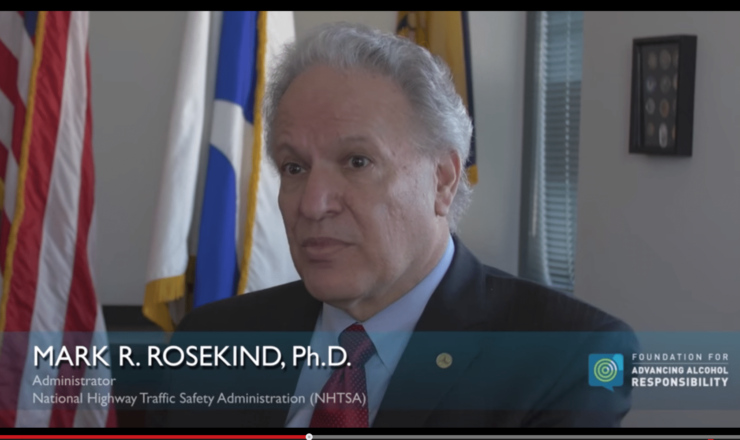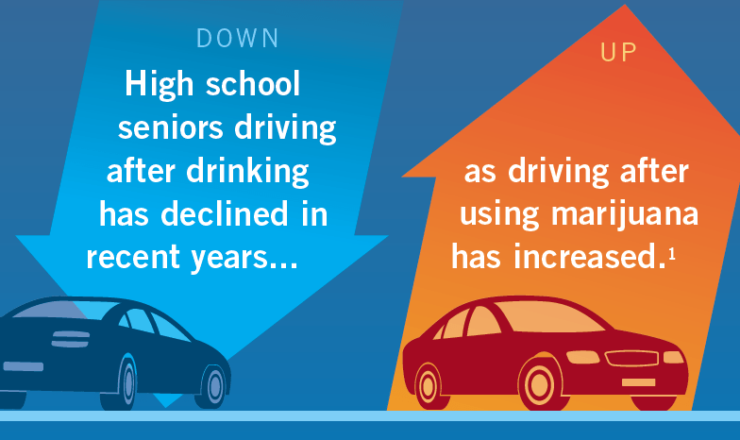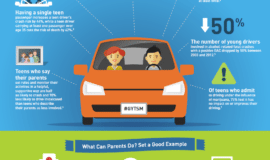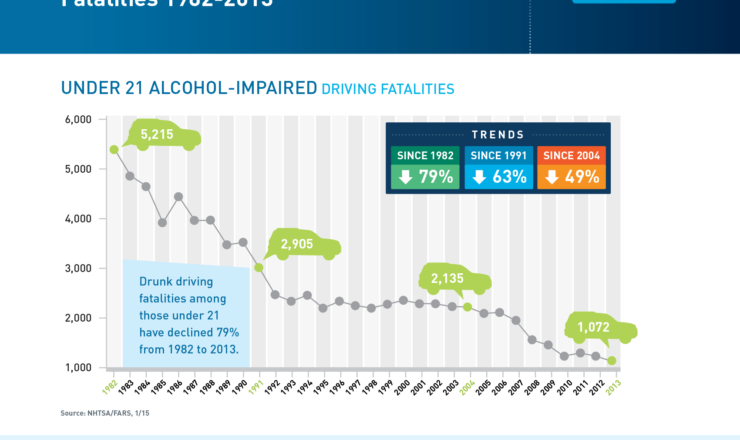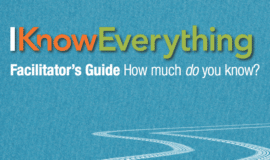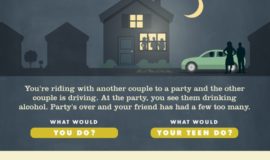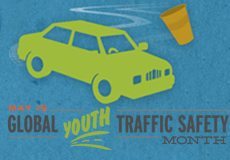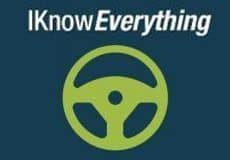A Driver's License is Earned; Teens Must Graduate!
The driver license is among the most coveted milestones on a teen’s road to independence. During this time of learning, it is important for teens to practice and hone their driving skills and also to become educated about safety. As parents and members of the community, we must carefully teach teens the rules of the road so young drivers develop life-long safe driving practices.
At Responsibility.org, we support the passage and implementation of comprehensive teen driving safety laws. We know that young drivers have a much higher crash risk when compared to older drivers due to their overall inexperience on the roadways. In an effort to prepare teens for driving and minimize their risk, licensing programs have been put in place that allow young drivers to learn in a gradual, step-by-step manner.
Graduated driver licensing (GDL) is a system utilized throughout the world that requires beginner drivers to qualify for a license before they have full (and unsupervised) driving privileges. While there is great variance among jurisdictions, all GDL programs are multi-stage or tiered, consisting of a beginner/learner phase, followed by a novice/intermediate stage, and finally, full licensure. Each tier has different rules and/or requirements aimed at reducing collision risk. In most GDL systems, the initial phases have supervised driving requirements, passenger restrictions, and night-time driving restrictions. These restrictions are eased or removed in a systematic fashion as teens gain more experience and improve their driving skills.
Since the first GDL program was established in Florida in 1996, every U.S. state and DC has gone on to implement a 3-tier GDL system that allows teens to gradually gain driving experience under lower-risk circumstances. The passage of these laws has reduced teen crashes 10-30% on average, although stronger programs have more positive effects (McCartt et al., 2010; Fell et al., 2011; Steadman et al., 2014). To learn more about the specifics of GDL laws and restrictions in your state, please refer to the Insurance Institute of Highway Safety.
A recent project [1] by the National Safety Council (Mayhew et al., 2014) identified best practices for GDL and created a comprehensive GDL framework:
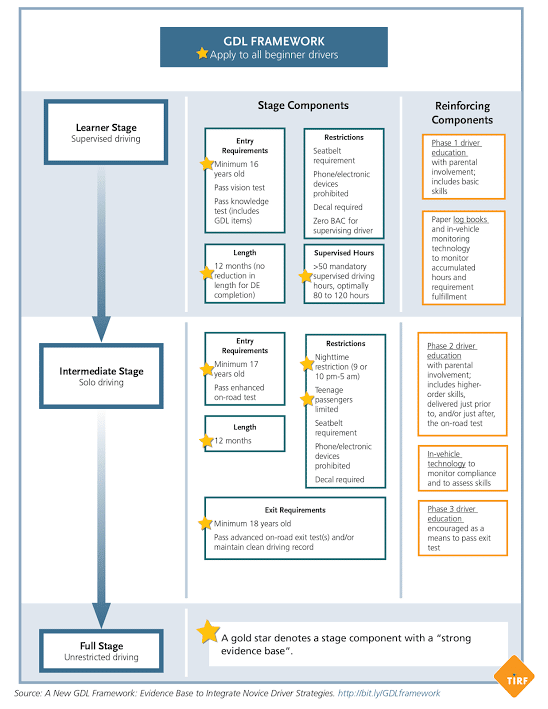
- Minimum learner entry at age 16
- Minimum duration of 12 months for the learner stage
- Minimum of 50 hours (optimal of 80-120) of supervised driving during the learner stage
- Minimum intermediate (provisional) licensing age of 17
- Starting time of 9 or 10pm for nighttime driving restrictions
- Ideal number of young passengers allowed in the vehicle is 0 or 1
- Minimum age for graduation to full driving privileges of 18
But parents, even if your state has all of the above restrictions, you’re not done yet! Irrespective of the laws in your state, you are the biggest influence on your children and we encourage you to be active participants in teen driver education. You can be both a driving instructor and model safe driving behavior for your children. Check out the IKnowEverything program for more ways to engage with your teen on this important issue.
[1] The framework was created through a review of scientific evidence, environmental scan of current and best practices, and an international expert panel discussion.





